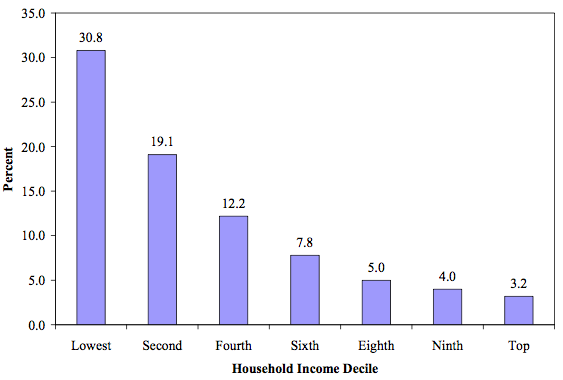This report sort of blew me away. When I think of unemployment I usually see it as an across the board phenomenon. I’m not sure why I would see it that way since housing markets don’t behave that way.
As WSJ sums up the report results:
>According to a study from Northeastern University’s Center for Labor Studies, unemployment for those in the top income decile–individuals earning more than $150,000 a year–was 3% in the fourth quarter of 2009. That compares with unemployment of 31% for the bottom 10% of income, and unemployment of 9% for the middle decile.
>The differing rates of underemployment–including those working part-time for economic reasons–are also notable. Underemployment for the top 10% was 1.6%, while the bottom was 21%.
3 Comments
Comments are closed.



Unemployment rates for the Upper East and West sides are at a very healthy 5.1% (recession, what recession? ) cruise up the avenues to Harlem/Upper Manhattan and we find that the rate jumps to 13.6%. No cheers for the Bronx at 15.7% unemployed and Brooklyn’s own poster child for economic woe, East New York leads the pack at a whopping 19.2%.
There are other factors at work besides just the unemployment numbers. For example, why is the upper end of the market lagging when those buyers seem to be okay? But putting it all together it does make sense, explains a lot and paints a fairly sobering picture.
interesting to note that population-wise, the lower 4 deciles have about 44 million households, while the top 3 deciles have 45 million.
Since these are household statistics and single mothers make up a huge, huge percentage of the lower 4 deciles while most of the 3 upper tiers would be 2 person households how does this skew the data (if at all?) when determining the unemployment rate by household? Furthermore in a 2 family, 3 upper decile family there’s a better than average chance the wife doesn’t work, removing her from exposure to the unemployment rate, while in a lower 4 decile household if someone isn’t working they are either unemployed or underemployed, since their income demands participation in the labor force.
Lastly, the lower 4 decile unemployement rates are high, but they are also statistically always high, so how much more is the recession affecting them vs. historically? The lowest 10% by income only make up to $12,500/year by household. It’s impossible to be fully employed and make that little unless you count sole proprietors, waiters, independent contractors, etc. – no full time employee legally makes that little so 30% unemployment and 50% u6 don’t seem to be out of line with expectations to me…
Also consider that someone who has worked up to a salary of $150k, has a lot of experience and is well qualified for many lower paying jobs. These people are going to be the first to be hired if they are willing to take a pay cut.